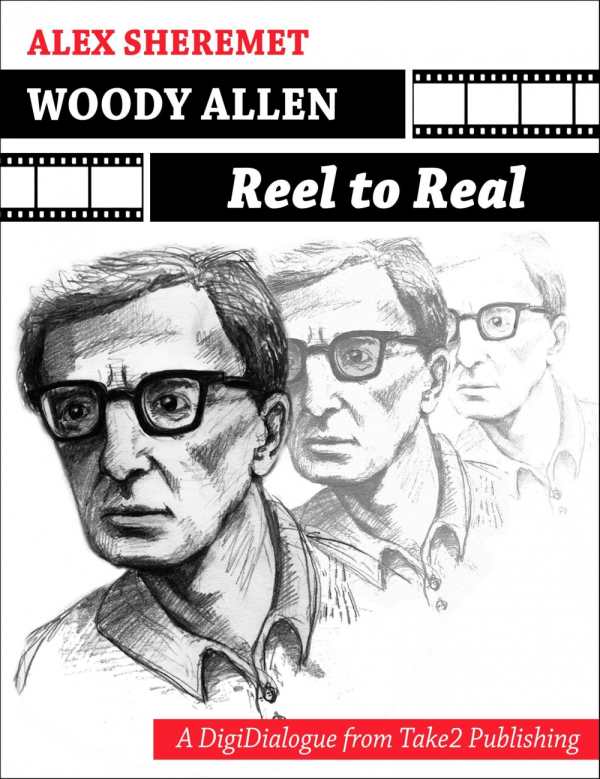
Woody Allen
Reel to Real
Woody Allen fans will prize this comprehensive, readable rundown of his oeuvre.
“Just where—and what—is the real Woody Allen?” This is the question Alex Sheremet addresses in his thorough, accessible study of Allen’s half-century in the movie industry. Woody Allen: Reel to Real blends Sheremet’s critique, other critics’ opinions, and reader feedback to give “a snapshot of Woody criticism as it exists now.”
From “The Early, Funny Ones 1965–1976” to “Circles and Asides 2005–2014,” Sheremet gives an up-to-the-minute inventory of Allen’s films. Detailed scene-by-scene synopses quote noteworthy dialogue, comment on music and cinematography, and observe where Allen subverts clichés or borrows from his previous work. Sheremet’s favorite is Stardust Memories, a mixture of dreams and metafiction that recalls Fellini. The author defends lesser movies, warns against conflating Allen with his protagonists, and engages in dialogue with his readers and fellow critics.
Sheremet, from New York City via Belarus, has written two novels and is working on a book-length poem about life in the USSR. His vast knowledge of Allen means he can consider the films as a whole canon, tracing themes and pinpointing where Allen is playing with stereotypes and precedents. For instance, the 1970s classics poke fun at Italian cinema or Bergman tropes, while the black-and-white Shadows and Fog pays homage to Kafka. Especially in later movies, Allen’s repetition of familiar motifs takes on an air of self-parody.
This guide goes far beyond the famous material: the Diane Keaton collaborations and the hapless Jewish Everyman heroes. The author is careful to counter received opinions, such as that Manhattan is primarily a love letter to New York City; rather, he argues, it contrasts the protagonist’s manipulative behavior with his idealism. Sheremet maintains a chummy informality with his subject and his readers, referring to “Woody” as often as to “Allen.” Despite his loving approach, he does not hesitate to skewer the movies that do not measure up. Yet “even among the detritus, there are glimmers of what [Allen’s] once done.”
After the film-by-film list, sections about Allen’s acting side-projects and about his major critics feel unnecessary. The comments from website readers, likewise, add little to the whole. Particularly in the correspondence with critic Jonathan Rosenbaum, Sheremet comes across as haranguing. Thus the “DigiDialogue” format, though novel, is arguably superfluous. It should also be noted that the book includes many plot spoilers.
This is an exhaustive study, ideal for established Allen enthusiasts and film students rather than the average moviegoer looking for an introduction. “I feel I’ve made no real contribution to cinema,” Allen once lamented; Sheremet proves this is not the case. Die-hard fans will treasure this book.
Reviewed by
Rebecca Foster
Disclosure: This article is not an endorsement, but a review. The publisher of this book provided free copies of the book and paid a small fee to have their book reviewed by a professional reviewer. Foreword Reviews and Clarion Reviews make no guarantee that the publisher will receive a positive review. Foreword Magazine, Inc. is disclosing this in accordance with the Federal Trade Commission’s 16 CFR, Part 255.
